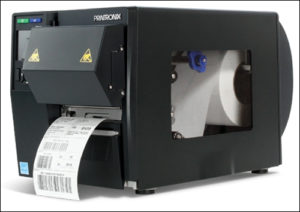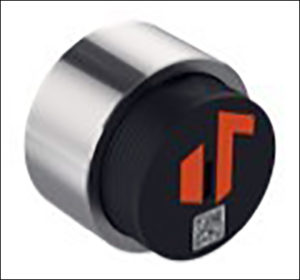Avery Dennison Smartrac, Future Laboratory partner on zero-waste action plan; TSC Printronix Auto ID adds RFID-barcode inspection to label printers; Tenna intros BLE beacon puck for construction equipment; IoT RTLS company Pinmicro joins UWB Alliance; AVX offers chip inductors for high-frequency RF apps; Sensormatic Solutions extends MTI partnership for RFID, IoT products; NewAge Industries announces B Corp. certification; Digital Twin Consortium, Global Mining Guidelines Group collaborate on digital twins for mining; Industrial Internet Consortium journal focuses on digital twins.
Apr 08, 2021Presented here are recent news announcements regarding the following organizations: Avery Dennison Smartrac, Future Laboratory, TSC Printronix Auto ID, Tenna, Pinmicro, the UWB Alliance, AVX, Sensormatic Solutions, Mobile Technologies Inc., NewAge Industries, the Digital Twin Consortium, the Global Mining Guidelines Group and the Industrial Internet Consortium.
Avery Dennison, Future Laboratory Partner on Zero-Waste Action Plan
Avery Dennison Smartrac has teamed up with the Future Laboratory consultancy to compile the Zero Waste Futures report. With two billion tons of waste generated annually worldwide, this free report provides brands and retailers with a strategic framework for action. The study outlines solutions for achieving a zero-waste future and transitioning to a circular economy, and it features best-practice case studies and details scenarios involving biomimicry materials, lifecycle visibility and circular ecosystems.
The report details six immediate focus areas to drive a zero-waste transition eco-design in which products are designed waste-free, with end-of-life and recyclability built in at the beginning of the design process; waste is reframed as a valuable resource of raw materials; focus is increased on consumer education around recycling; legislation prevents or limits the generation of unnecessary waste; collaboration occurs in the industry and cross-sector to propel systemic change; and technologies are adopted to enable end-to-end supply chain visibility.
 The proliferation of waste and environmental pollution has been exacerbated by the COVID-19 pandemic, the companies report. In the United States, containers and packaging comprise 28 percent of the waste that ends up in landfills, while three billion packages were shipped this past Christmas—an increase of 800 million from the previous year. Roughly one-third of food produced globally for human consumption ends up lost or wasted, while textile waste is estimated to increase by about 60 percent by 2030, with an additional 57 million tons of waste generated annually for an annual total of 148 million tons.
The proliferation of waste and environmental pollution has been exacerbated by the COVID-19 pandemic, the companies report. In the United States, containers and packaging comprise 28 percent of the waste that ends up in landfills, while three billion packages were shipped this past Christmas—an increase of 800 million from the previous year. Roughly one-third of food produced globally for human consumption ends up lost or wasted, while textile waste is estimated to increase by about 60 percent by 2030, with an additional 57 million tons of waste generated annually for an annual total of 148 million tons.
“The sheer scale of global waste has created a renewed sense of urgency,” said Tyler Chaffo, Avery Dennison Smartrac’s manager for global sustainability, in a prepared statement. “We need cross-sector collaboration and a shared vision to drive system-wide change, because the problem must be solved from multiple angles. Each sector will need to create calculations around the materials they use, their environmental impact, where waste occurs in the supply chain and where it can be eliminated for the most sustainable outcome.”
The combination of materials and digital solutions will play a critical role, according to Avery Dennison Smartrac. Part of the problem, the company explains, is “invisible waste” caused by poor inventory management and overproduction. Solutions such as unique digital IDs, which provide end-to-end supply chain transparency, can make invisible waste visible, the firm notes, creating more efficient inventory management and allowing businesses to eliminate unnecessary waste.
TSC Printronix Auto ID Adds RFID-Barcode Inspection to Label Printers
TSC Printronix Auto ID, a manufacturer of thermal barcode printing technology, has upgraded its T6000e enterprise industrial printer by adding integrated RFID and barcode inspection capabilities. Users can print and encode RFID labels and inspect and grade the quality of printed barcodes in a single pass. The printer enables users to print, encode and perform barcode verification at the same time, without the need for separate machines.
The printer is the latest from TSC Printronix Auto ID to be powered by SOTI Connect remote printer-management software. IT personnel can remotely manage and monitor mission-critical devices, configure settings, set up security, push firmware updates in the field, and achieve real-time visibility and control from a central, remote location. The printer features a pre-mounted barcode verifier, RFID auto-calibration and GPS functionality to automatically detect and anticipate barcode alignment.
 The printer includes the company’s Encode During Print firmware to eliminate inlay placement issues. The T6000e supports high-speed encoding and can encode high-memory chips. A variety of label types are supported, ranging from standard smart labels and on-metal tags to returnable transport item labels, rigid horticultural tags and more, including labels with a pitch as low as 0.625 inch. With RFID and barcode inspection integrated into the printer, reports can be generated to show barcode quality and information, as well as RFID data and combined statistics.
The printer includes the company’s Encode During Print firmware to eliminate inlay placement issues. The T6000e supports high-speed encoding and can encode high-memory chips. A variety of label types are supported, ranging from standard smart labels and on-metal tags to returnable transport item labels, rigid horticultural tags and more, including labels with a pitch as low as 0.625 inch. With RFID and barcode inspection integrated into the printer, reports can be generated to show barcode quality and information, as well as RFID data and combined statistics.
The reports are available in various formats, including XML and CSV, for integration with host systems, or they can be viewed in the free version of the PrintNet Enterprise utility. The printer’s optical scanner finds, reads and grades up to 50 barcodes per label, with each barcode graded using ISO standards and given a letter and numeric score. The grading score includes details about the ISO standard, the type of barcode, the barcode data and the label image. The reporting capability of every label helps organizations defend chargeback fees and penalties.
The optical scanner and RFID reader are integrated into the printer’s main control system to enable actions to be taken if a bad label is detected. If a scanned label is determined to be below the acceptable ISO standard, or if the RFID reader detects a faulty label, the printer will automatically back up the bad label, overstrike it so it is not used and reprint a new label without operator intervention.
“Users are increasingly facing requirements to both encode RFID labels and verify their barcodes,” said Chris Brown, an RFID subject-matter expert at TSC Printronix Auto ID, in a prepared statement. “Traditionally, these have been separate functions—even in people’s minds—but when users realize that they can have both in a single printer, driven by a single print-job, they quickly realize the cost and time savings that the T6000e offers. We see many breakthrough moments when speaking with endusers, service bureaus and resellers about this new solution.”
Tenna Intros BLE Beacon Puck for Construction Equipment
Tenna, which provides a construction technology platform for equipment fleet operations, has announced that it has launched its TennaBLE Beacon Steel Puck, designed to facilitate construction equipment fleet tracking and management. The puck can autonomously track equipment parts and attachments with aggressive, high-impact use, such as buckets and blades. Based on Tenna’s traditional Bluetooth Low Energy (BLE) beacon, it is encased in steel and welded to an asset for extra ruggedness. Tenna, which offers durable, rugged hardware, says it sought to create a robust solution that would autonomously monitor parts and attachments for its contractors.

“We saw an opportunity to improve on the ruggedness of our already excellent BLE asset tracker,” said Frank Rodriguez, Tenna’s hardware engineering manager, in a prepared statement. “Working with our lead implementation mechanic, Jim G., we engineered a case design that leverages the extreme temperature performance of an IP67, watertight, glass-filled nylon inner casing, along with a tough AL-killed steel outer fitting for impact resistance. A welded fitting on the asset provides a permanent mounting that will resist the most extreme of forces. We designed the casing and mounting strategy to have minimal impact to the RF signal propagation so our customers will still enjoy excellent range with our toughened BLE solution.”
The TennaBLE Beacon Steel Puck sends out regular heartbeats that are recognized by the company’s mobile asset-tracking apps for iOS and Android. When downloaded onto a smart device, the app automatically identifies and records the locations of tagged assets within range, then stores that data. This visibility helps contractors save time, improve communication, work more efficiently, and improve operations and workflows in the field, Tenna explains.
“We are very excited to unveil this new product offering,” added James House, Tenna’s director of implementation, in the prepared statement. “Attachments are often overlooked in the equipment management world because, until now, there was no autonomous solution that was able to hold up to the rigors of the environment these assets are used in. By using the new TennaBLE Beacon Steel Puck, our clients will now have full visibility over where these assets are on the jobsite and in the yard. No more buckets left in the weeds during job closeouts.”
IoT RTLS Company Pinmicro Joins UWB Alliance
Pinmicro has announced that it has joined the UWB Alliance. “We are delighted to welcome Pinmicro to our membership and look forward to their involvement and valued contributions in the UWB Alliance organization,” said Tim Harrington, the Alliance’s chairman, in a prepared statement.
The Japanese company is a global provider of Internet of Things-based real-time location systems (RTLS), ranging from BLE and UWB hardware beacons to enterprise-scale cloud-native analytics. Pinmicro focuses on enhancing the business performance of its customers by locating, monitoring and analyzing resources in real time. Its location-intelligence solutions are designed to accelerate digital transformation across business domains, including retail, education, manufacturing, event management, facility operations and smart workspaces.
The UWB Alliance’s mission is to advocate for a favourable regulatory environment to promote ultra-wideband technology innovation and growth. This includes securing advantageous updates to rulesets in the United States and Europe. Committed to accelerating the adoption of UWB technology by providing regulatory knowledge and guidance, the Alliance works with other international organizations to help members increase their market presence.
“Our core value proposition to Pinmicro customers is, ‘How can we enhance business performance using location intelligence?’ UWB provides technology and accuracy capabilities that could never be imagined before,” added Tiby Kuruvilla, the global CEO of Pinmicro Japan, in the prepared statement. “We are proud to be part of the UWB Alliance and look forward to leveraging the inherent benefit to create more savings and value for our customers.”
UWB technology has gained growing public attention in recent years, the company reports, with smartphone vendors adding UWB into their products, and with UWB being rolled out in PCs and smart-home and smart-wearable products. It has been adopted by the automotive industry to prevent vehicle theft, and technology companies are deploying UWB for such applications as secure payment solutions, AR and VR, high-resolution COVID-19 contact tracing, medical and entertainment.
AVX Offers Chip Inductors for High-Frequency RF Apps
AVX, a manufacturer and supplier of electronic components and interconnect, sensor, control and antenna solutions, has released a series of ultraminiature multilayer ceramic chip inductors for high-frequency RF applications. The LCCI inductors are available in three standard EIA chip sizes—0201, 0402 and 0603—with tight-tolerance physical dimensions almost exclusively in the submillimeter range and tin-plated surface-mount terminations. This, the company says, enables compatibility with high-density PCBs and reflow soldering in space- and weight-constrained applications in the telecommunications and networking markets, as well as with lead-free and RoHS directives.
The devices provide reliability and performance from 100 MHz to 2.4 GHz, AVX reports, with high Q, high signal efficiencies, low DC resistance, tight inductance tolerances down to ±0.1nH, and guaranteed self-resonant frequencies up to 10 GHz. Applications include mobile communications and computer networking systems, wireless large-area networks, radio frequency identification systems, personal handheld systems ranging from smartphones and tablets to media players and gaming devices, and EMI countermeasures in high-frequency circuits.
 “Our new LCCI Series inductors are constructed with tight physical tolerances using our proven multilayer ceramic material and processing technologies,” said Mohammed Abu-Naim, AVX’s RF product manager, in a prepared statement, “to ensure proper fit and function and are subjected to rigorous testing conditions to validate that they meet or exceed all of the requirements necessary to deliver exceptional performance and outstanding reliability in a wide range of high-frequency applications.”
“Our new LCCI Series inductors are constructed with tight physical tolerances using our proven multilayer ceramic material and processing technologies,” said Mohammed Abu-Naim, AVX’s RF product manager, in a prepared statement, “to ensure proper fit and function and are subjected to rigorous testing conditions to validate that they meet or exceed all of the requirements necessary to deliver exceptional performance and outstanding reliability in a wide range of high-frequency applications.”
The LCCI inductors are rated for use in operating temperatures spanning from -40 degrees to +85 degrees Celsius. They are available with three standard inductance values (3.9nH, 39nH and 390nH) and seven standard inductance tolerances (2 percent, 3 percent, 5 percent, 10 percent, 0.1nH, 0.2nH and 0.3nH).
Inductance values for 0201 parts extend from 0.3nH to 39nH, with inductance tolerances ranging from ±0.1nH to ±5 percent and minimum SRF values spanning from 1,500 MHz to 10,000 MHz. Inductance values for 0402 parts extend from 0.3nH to 150nH, with inductance tolerances ranging from ±0.1nH to ±5 percent and minimum SRF values spanning from 550 MHz to 10,000 MHz. Inductance values for 0603 parts extend from 1.0nH to 470nH, with inductance tolerances ranging from ±0.3nH to ±5 percent and minimum SRF values spanning from 300 MHz to 10,000 MHz.
Sensormatic Solutions Extends MTI Partnership for RFID, IoT Products
Johnson Controls has announced that Sensormatic Solutions, its retail solutions portfolio, has extended its partnership with Mobile Technologies, Inc. (MTI), a provider of smart retail security, tablet mobility and global services. The partnership involves Sensormatic Solutions’ loss-prevention and liability offerings for high-value electronics, helping retailers protect displayed electronics while broadening its protection categories.
“Retailers need technology in place that not only allows them to safeguard their most valuable merchandise, but also provides the end user with the experience they need to make purchase decisions,” said Craig Szklany, Sensormatic Solutions’ VP of global solutions management, in a prepared statement. “By partnering with MTI, we are able to broaden our offerings and provide a unique portfolio of retail security solutions for high-value electronics that complements Sensormatic Solutions’ industry-leading portfolio of loss-prevention and liability offerings.”
MTI’s technology is intended to help customers engage with products and streamline such operational challenges as managing key cards, retrofitting displays and adjusting planograms. Its solutions are designed to protect displayed products, such as mobile devices, smartphones, electronics and cameras, while allowing customers to interact with these devices. Solutions from MTI’s security catalog now available to Sensormatic Solutions’ customers include:
- Versa Key: An RFID smart key solution that requires no charging, offers employee accountability associated with access to secure products, and allows easy adjustment to planograms.
- Freedom Micro II HS: A modular display that offers armored security and dynamic IoT connectivity readiness to prevent theft attempts with high-value smartphones.
- XD Guardian Universal: A high-security, all-mechanical display that provides more than 1,000 pounds of pull strength to defend smartphones and tablets, designed to withstand violent theft attempts such as kicking and hammering.
- CX Flex: A security solution for protecting up to four products at a time; these reusable cable sensors do not require adhesive and are built to facilitate remerchandising.
- Freedom Focus: A system that allows retailers to quickly merchandise all camera styles, sizes and form factors, even if a tripod mount is off-center.
- MTI Locks: A set of RFID locks for drawers and doors, IoT-enabled to simplify store operations while stopping theft.
The locks have a long life and allow easy battery replacement, the company reports, with more than one year of operation per battery and more than 30,000 cycles. They can be retrofitted for cabinets, drawers and cases for retailers that fulfill more orders through “buy online, pickup in store” (BOPIS).
“We’ve found that as smartphone prices rise, thieves become bolder, making loss prevention a greater challenge for many retailers that sell electronics,” added Mary Jesse, MTI’s chief executive officer, in the prepared statement. “We’re excited to partner with Sensormatic Solutions to offer retailers a full suite of hardware, software and professional services that not only prevent theft and ORC, but also provide clients a consistent brand experience anywhere in the world. Together, we will hold the line against retail theft to increase our customer’s profitably.”
NewAge Industries Announces B Corp. Certification
NewAge Industries has announced that it has achieved B Corp. certification from B Lab, a nonprofit organization that has certified more than 3,800 companies to date in 74 countries throughout 150 industries. Since NewAge’s founding as a plastic tubing supplier in 1954, it has strived to operate as a good corporate neighbor by donating to charitable organizations and taking steps for proper waste handling and recycling. Sustainability and green projects became key focuses, the company reports, and supporting the local community grew in importance.
To that end, NewAge began hosting Red Cross blood drives, enabling team members to donate blood. It became a supporter of the U.S. Marine Corps Reserves’ annual Toys for Tots program, and it organized food and clothing drives. A rooftop solar array was installed to power its headquarters with renewable energy, while retired laptop computers were shipped to a rural school overseas, along with donations for solar power equipment. Local high school and college students were invited to participate in internships and co-operative education opportunities.
Team members were allotted an annual paid day for volunteer activities, and the company’s charitable contributions and recycling practices, including proper e-waste recycling, continued. NewAge’s owners focused on supporting employees’ physical, mental and financial well-being. Retirement plans were put in place, a bonus plan was introduced, and a wellness committee was formed from employee volunteers, with the goal of promoting healthy lifestyles. Next came employee ownership, when then-owner Ken Baker (now the firm’s CEO) transferred thirty percent ownership of NewAge Industries by means of an employee stock-ownership plan.
In August 2019, the company and its AdvantaPure, Verigenics and BrewSavor RFID product divisions became fully owned by its employees, and it applied for B Corp. status. “It was the next step in our evolution as a corporation,” Baker said in a prepared statement. “Companies that can do good things for others and the environment, all while remaining profitable, are well-regarded. Consider Ben and Jerry’s, Patagonia, Bombas, King Arthur Flour, Seventh Generation, Leesa and Cabot. NewAge is in very good company.”
Digital Twin Consortium, Global Mining Guidelines Group Collaborate on Digital Twins for Mining
The Digital Twin Consortium and the Global Mining Guidelines Group (GMG) have entered into a liaison agreement to solve mining industry challenges by enabling the development and adoption of digital twin technologies. The consortia have agreed to the following identifying and sharing use cases and applications of digital twins in mining: identifying and sharing best practices across natural resource industries; collaborating on guidelines for the development and adoption of digital twins in mining; identifying testbed opportunities and innovation platforms for collaboration on the development of prioritized digital twin use cases for case study analysis; and applying lessons from other industry sectors to mining and driving consistency across industries.
The organizations will exchange information through regular consultations, seminars and more. The Digital Twin Consortium will support the alignment of GMG’s workstreams, such as interoperability and data access and usage, cybersecurity, asset management, artificial intelligence, electric mining and autonomous mining. GMG’s workstreams, meanwhile, will support the alignment of the Digital Twin Consortium’s workstreams, including technology, terminology and taxonomy; security and trustworthiness; conceptual, informational, structural and behavioral models; and enabling technologies such as simulation and AI.
“Mining is an increasingly technology-driven industry, and there are opportunities for improved processes and equipment,” said Prith Banerjee, the chief technology officer of Ansys and a member of the Digital Twin Consortium’s steering committee, in a prepared statement. These include digital twins and new mining practices for improved safety, automation, energy efficiency, environmental stewardship and cost management. “We look forward to working with Global Mining Guidelines to further the use of digital twins in the mining industry to improve processes and best practices.”
“The mining industry has benefitted significantly from digital transformation initiatives to increase performance in real time, enhance safety, and improve resource knowledge for better extraction and supply chain effectiveness,” added Heather Ednie, GMG’s managing director, in the prepared statement. “As part of this transformation, digital twins are emerging as a critical topic. In support of industry progress, GMG is pleased to work alongside the Digital Twin Consortium to facilitate education, alignment and adoption of digital twin technologies within mining.”
Industrial Internet Consortium Journal Focuses on Digital Twins
The Industrial Internet Consortium (IIC) has announced the 16th edition of its Journal of Innovation (JoI). This issue focuses on digital twins, including applications that bridge the gap between the physical and virtual worlds in such industries as aerospace, manufacturing and energy. The journal highlights innovative ideas, approaches, products and services emerging within the Industrial Internet, in areas such as digital twins, data, the IoT, digital transformation, AI, smart cities, smart factories and edge computing. This edition consists of expert guidance contributed by industry leaders from IIC member organizations, including the following articles:
- “Web-Based Digital Twin,” by authors from the Technical University of Darmstadt, presents current solutions for implementing digital twins over web technologies, which many view as a prerequisite for establishing digital twins on a broad scale.
- “Open-Source Drives Digital Twin Adoption,” by representatives of ABB, Bosch, the Digital Twin Consortium, Microsoft, SAP, XMPro and Yo-i Information Technology, elaborates on the challenges in adopting the digital twin concept in practice and the motivations for having open standards and open-source activities to address these challenges.
- “Design and Implementation of a Digital Twin for Live Petroleum Production Optimization: Data Processing and Simulation,” by authors from OspreyData, delves into how digital twins can be built to represent systems of assets that can be valuable in determining optimal operational set-points.
- “Digital Twin and IIoT in Optimizing Manufacturing Process and Quality Management,” by authors representing Yo-i Information Technology, presents concepts and practices on the design, implementation and preliminary outcomes, based on a real-world use case in a production process control and quality management application in the steel industry.
“Digital twin [technology] is already fulfilling its potential to improve process efficiency and optimize operational sustainability for organizations,” said Mark Crawford, SAP‘s director of standards strategy and co-chair of the IIC’s Thought Leadership Task Group, in a prepared statement. “The IIC has taken a market leadership position by identifying the defining characteristics of a digital twin and is setting the pace in enabling cross-industry collaboration. We hope you enjoy the thought-provoking articles in this edition of the JoI that looks at digital twin from a variety of technical perspectives.”


